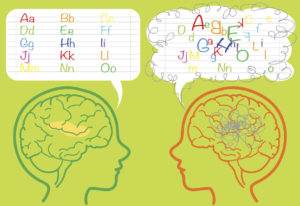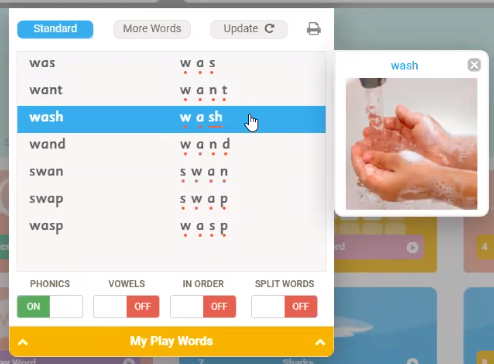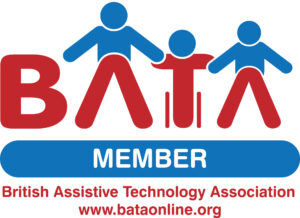
Wordshark was originally designed to help students with dyslexia and continues to be the go-to for SENCOs. It includes carefully thought-through games, structured lists, and a phonic approach. It provides the ‘overlearning’ that is often needed.
The program is also excellent for children with other special educational needs including ADHD, ASD, dyspraxia and for catch-up students.
Examples of how Wordshark helps with dyslexia:
- The words are in structured and ordered lists and courses to make learning more effective. In addition to the 10,000 words, grouped into courses such as ‘Alpha to Omega’, you can also choose to add your own words
- Phonics – words can be broken into phonemes and graphemes, and these are used in dedicated phonics games
- High frequency words – these are included as they can present difficulties for dyslexic students
- Enticing games and continual encouragement provide more than enough incentive– perfect for reluctant learners and those with a short attention span
- Highly adaptable – multiple options and settings meet every need – e.g. slowing down games to allow more thinking time or changing the background colours to make words easier to read
- Allowing ‘overlearning’ but also developing underlying skills – the variety of games means that students meet the same words in many different contexts and never get tired of going over the same information.
- Multi-sensory – students need to respond to exciting games with their voice, eyes and ears
- Independent learning – students can enjoy working at a pace and level that suits their learning needs, seeing their own progress and building confidence
- Own lists can be added too
Tips! For Dyslexia
The default for Wordshark is the automatic placement test and automatic progression which is timesaving for the teacher and allows independent learning for the student. In addition, you can adapt Wordshark including via set work, and use the program to fit in with your teaching practices.
- Make use of the two courses that are structured and sequential:
- Wordshark course (the course used with the default ‘Supershark’ automatic progression course, after the Shark Challenge placement test). The course is also available via setting work.
- Alpha to Omega (one of the available courses via setting work)
- Encourage students to choose a wide range of (multisensory) games including ‘Say Word’.
- Headphones are essential in a busy classroom especially with the phonic games.
- Pay very great attention to ‘My Play words’ by clicking on the yellow ‘My Play Words’ banner. You can select each word to hear it, see its picture, and explore the phonics or syllables if relevant – using the sliders below the list.

- Encourage students to ask if they do not spot the learning intention in each new list.
- If you are teaching particular spellings, set work to reinforce, by choosing the appropriate list in Wordshark.!
- Encourage/reward students when they use the newly learnt spellings in their writing.
- Discuss the meanings of the words when linking them to the photos. Consider a hand-held white board/paper to handwrite the words as well.
- Consider printing the crossword or wordsearch for a list.
- Create your own word lists. Creating Own Lists can reflect the personal interests of students, misspellings in written work, and words needed for classwork.
- Students creating own word lists via the tab called ‘My own lists’. Sometimes students are given class spellings to learn in addition to individual support – so with help from an adult or sibling, to ensure accuracy, the student can put this list in as their own list (as distinct from a teacher’s own list) to practise. (Note: you, as the teacher, will not see this.) You’ll need to make sure that you haven’t previously disabled this for your student/s.
- Have a structure to teaching sessions and a routine for homework – several short sessions a week.
For other Special Needs
- Dyspraxia – the games in Wordshark that do not impose a time limit will be easier to play as will turning speeds down
- ASD and ADHD – both ‘Supershark’ (automatic progression course), and assigning Set Work can provide a helpful, structured way of working
- Visual stress – some children find it easier to read with a specific background colour. Wordshark allows you to go into ‘settings’ and choose the preferred colour
- Children that have spent time out of school – the ‘Wordshark’ word list course is a good overall course to use
- Headphones – these are recommended, especially for phonic work and when working in a noisy environment
Phonics
Students can be encouraged to open-up the list they are working on to check out the words and explore the phonics and syllables.
Wordshark is in a user-friendly format – useful lists of spelling patterns are sorted by intervention program (eg National Curriculum spellings/Alpha to Omega etc.)
Fantastic resource – of all the resources our deaf children have used, this has been by far the most effective for teaching phonics and spelling. Age range from 5-13 year-olds.
I had a boy in my class who couldn’t read at all couldn’t spell his own name. Our SENCO set up a daily program of 10 minutes 1:1 with a LSA and Wordshark and the impact was phenomenal. Over the years I was aware of our SENCO setting up programs for other students and the progress they were making. In 2013 I left the classroom and set up my own tutoring business at home. I bought both Wordshark and Numbershark to use with my students and they were both a massive help. With Wordshark the option of following a program, using your word lists was great for instant support or setting up a scheme of work for a term. With many of my students they would bring their own spelling lists to my class and I used the facility to enter their own word lists to personalise the support. I now use this feature every week with my nearly 6-year-old for her spellings, and as soon as she comes home on a Monday she asks to play the shark game.
Love it when they can see the progress they have made. Wordshark under pins their enjoyment of learning.
If I was stuck on a desert island with a group of children with Dyslexia, then Wordshark would be my luxury item!
Wordshark and Numbershark have the variety to meet the needs of the rarer disabilities and conditions.
We are a special school catering for pupils with moderate learning difficulties. Wordshark is used as part of our phonics course in key stages 2 & 3. Programmes of work are set up for each group at the start of each week to match the phoneme(s) being practised that week. It is particularly useful for us as it allows reinforcement of the pupils’ work at their own pace. The additional motivation provided by the reward games keeps the pupils working.
Thank you for this wonderful resource. As a Speech and Language Therapist supporting children with dyslexia I use it constantly!
useful SEND organisations/information:
Dyslexia:
SEND:
National Association for Special Educational Needs (NASEN)
Professional association of teachers of students with specific learning difficulties (PATOSS)
CAMHS:







